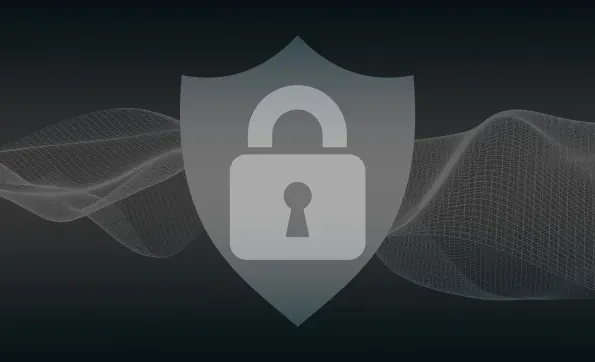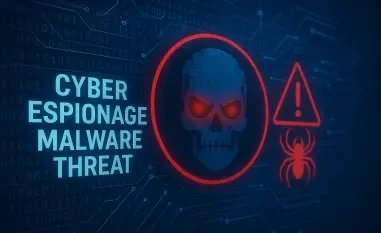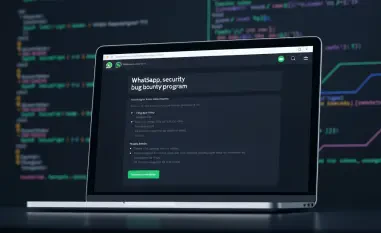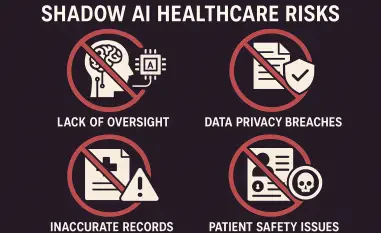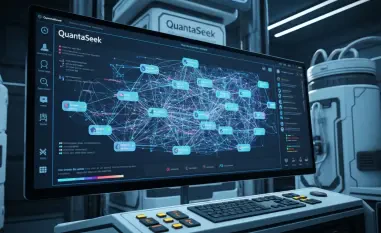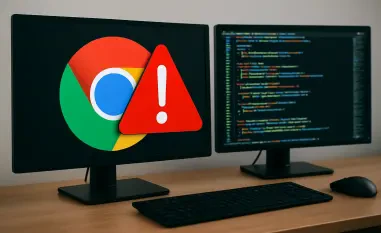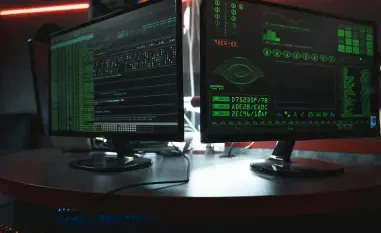In today’s digital age, cybersecurity threats are becoming increasingly sophisticated and pervasive. The recent “Threat Intelligence Report” by Check Point Research underscores the urgency of addressing these challenges. This article explores effective strategies to combat the rising threats in cybersecurity, focusing on proactive measures, timely patching, and advanced defense mechanisms.
Strengthening Cybersecurity in Supply Chain Management
Importance of Robust Cybersecurity Measures
Recent ransomware attacks on supply chain software providers like Blue Yonder have drastically impacted services for major clients, including Starbucks and UK grocery chains. The disruption of essential services such as employee scheduling and payroll processing demonstrates the severe consequences of inadequate cybersecurity within the supply chain sector. These incidents highlight the critical need for industries to implement robust cybersecurity measures to safeguard against potential disruptions and protect sensitive data.
Organizations must recognize the complexity and interdependency of modern supply chains and adopt comprehensive security protocols to prevent cyber-attacks. This can include deploying advanced threat detection systems, conducting regular vulnerability assessments, and ensuring all software and systems are consistently updated. By prioritizing cybersecurity, supply chain organizations can minimize disruption risks and maintain continuous operations, ultimately protecting their reputation and client trust.
Engaging with Cybersecurity Firms
In the wake of attacks like the one experienced by Blue Yonder, it is imperative for organizations to collaborate with cybersecurity firms to mitigate damage and restore services efficiently. Cybersecurity firms offer specialized expertise in identifying vulnerabilities and deploying timely solutions to thwart ongoing threats. Engaging with these experts ensures that security gaps are promptly addressed, reducing downtime and preventing similar incidents from occurring in the future.
Ongoing partnerships with cybersecurity firms also provide access to the latest threat intelligence and advanced security tools, enabling organizations to stay ahead of emerging threats. Regular security audits and assessments conducted by qualified professionals can help maintain a robust defense posture. These proactive measures, combined with continuous monitoring, create a resilient security framework that protects against cyber threats and maintains operational integrity.
Enhancing Security in Local Government Services
Protecting Critical Municipal Services
The ransomware attack on the city of Hoboken, New Jersey, serves as a stark reminder of the susceptibility of local government services to cyber threats. Critical municipal services, such as public safety and utility management, are vital to community welfare and must be protected against cyber-attacks. Municipalities need to prioritize cybersecurity by implementing multi-layered security measures, including firewalls, intrusion detection systems, and data encryption, to safeguard against potential attacks.
Local governments should also develop and maintain comprehensive incident response plans to ensure swift action when an attack occurs. These plans should outline the steps for containing the threat, communicating with the public, and restoring disrupted services. By taking a proactive stance on cybersecurity, municipalities can protect critical services and ensure continuity, even in the face of evolving cyber threats.
Training and Awareness Programs
In addition to technological defenses, local governments must invest in training and awareness programs to educate employees about cybersecurity best practices. Human error remains a significant factor in successful cyber-attacks, making it essential for staff to recognize and respond to cyber threats. Training programs should cover topics such as identifying phishing attempts, understanding the dangers of social engineering, and adhering to secure password practices.
Regular drills and simulations can enhance preparedness by providing hands-on experience in handling cyber incidents. These exercises can help employees become familiar with incident response procedures and improve their ability to react effectively during an actual attack. By fostering a culture of cybersecurity awareness, local governments can significantly reduce the risk of breaches and strengthen their overall security posture.
Safeguarding Healthcare Institutions
Addressing Vulnerabilities in Healthcare
The ransomware attack on Wirral University Teaching Hospital NHS Trust in the UK underscores the healthcare sector’s susceptibility to cyber threats and the urgent need for robust security measures. Healthcare institutions are particularly vulnerable because they house vast amounts of sensitive patient data and cannot afford operational disruptions. In response, these organizations must prioritize implementing advanced security solutions to protect patient data and ensure uninterrupted services.
Hospitals and clinics should employ a multi-layered security approach that includes network segmentation, intrusion detection systems, and regular security audits. Additionally, healthcare facilities must stay current with software updates and patches to address potential vulnerabilities promptly. Leveraging advanced threat detection technologies, such as machine learning and artificial intelligence, can help identify and mitigate cyber threats before they cause significant damage.
Enhancing Data Protection Measures
Given the sensitive nature of the data they handle, healthcare organizations must adopt stringent data protection measures to prevent unauthorized access and data breaches. Encrypting patient data is a fundamental step in protecting information during storage and transmission. Implementing access controls based on the principle of least privilege ensures that only authorized personnel can access sensitive data, reducing the risk of insider threats.
Healthcare institutions should also establish comprehensive security protocols and regularly review and update them to address evolving threats. Continuous monitoring and threat detection play a crucial role in maintaining security. By deploying systems that can detect and respond to anomalies in real-time, healthcare organizations can swiftly address potential breaches and minimize their impact. These proactive measures are essential for maintaining patient trust and safeguarding critical healthcare operations.
Securing Financial Institutions
Internal Security Protocols
The cyber attack on Uganda’s central bank, which resulted in unauthorized transfers of billions of shillings, emphasizes the need for financial institutions to implement robust internal security protocols. Insider threats pose a significant risk to financial institutions, making it crucial to establish stringent access controls and monitor employee activities consistently. Organizations must adopt comprehensive security policies that define acceptable use of systems and outline consequences for violations.
Regular audits and compliance checks can help ensure that security measures are effective and that employees adhere to established protocols. These audits can identify potential vulnerabilities and areas for improvement, enabling timely remediation before issues escalate. By maintaining strict internal security protocols, financial institutions can protect their assets and maintain the trust of their clients and stakeholders.
Advanced Threat Detection Systems
Financial institutions must also deploy advanced threat detection systems to identify and respond to cyber threats in real-time. Leveraging technologies such as artificial intelligence (AI) and machine learning (ML) can enhance threat detection capabilities by analyzing vast amounts of data for patterns indicative of malicious activity. These systems can proactively defend against sophisticated attacks, reducing the chances of successful breaches.
Implementing advanced threat detection systems enables financial institutions to monitor network activity continuously and detect anomalies that may signify a potential threat. Real-time alerts and automated responses can help mitigate the impact of attacks and prevent unauthorized transactions. By integrating these advanced systems into their security framework, financial institutions can keep pace with the evolving cyber threat landscape and protect their critical operations.
Protecting the Gaming Technology Sector
Proactive Defense Mechanisms
The cyberattack on International Game Technology (IGT) highlights the growing exposure of the gaming technology sector to cyber threats. Gaming companies must adopt proactive defense mechanisms to protect their networks, systems, and user data. Implementing regular security assessments and updates can help maintain a strong defense against cyber threats, ensuring the safety and integrity of gaming platforms.
Proactive defense strategies include deploying firewalls, intrusion detection systems, and endpoint protection solutions to detect and block potential threats. Regularly updating software and systems helps mitigate vulnerabilities and prevent exploitation by cybercriminals. Moreover, conducting comprehensive security audits can uncover hidden weaknesses, enabling organizations to address them before they can be exploited.
Collaboration with Cybersecurity Experts
To effectively protect their systems, gaming technology providers should collaborate with cybersecurity experts who can identify vulnerabilities and implement effective security measures. Engaging with professionals ensures that the latest threats are promptly addressed and that security protocols are up-to-date. Cybersecurity experts can advise on industry best practices and provide guidance on implementing advanced defense mechanisms.
Regular consultations with cybersecurity experts can help gaming companies stay informed about emerging threats and evolving tactics used by attackers. By leveraging expert knowledge and staying updated on the latest security trends, gaming technology providers can enhance their defense capabilities and reduce the risk of successful cyber-attacks. This collaboration fosters a robust security culture that protects both the organization and its users.
Addressing Vulnerabilities in Web Applications
Timely Patching of Known Vulnerabilities
The “Threat Intelligence Report” emphasizes the critical importance of timely patching to prevent the exploitation of known vulnerabilities. Organizations must prioritize updating their systems and applications to address security flaws as soon as updates are available. Regular patch management is essential for mitigating risks and protecting against potential attacks that target unpatched vulnerabilities.
Timely patching involves not only applying updates to operating systems and applications but also keeping plugins and other third-party components up-to-date. Organizations should establish a systematic process for identifying and deploying patches quickly to reduce exposure to cyber threats. Effective patch management ensures that vulnerabilities are addressed promptly, thus minimizing the risk of successful exploitation by cybercriminals.
Continuous Monitoring and Threat Detection
Implementing continuous monitoring and threat detection systems is vital for organizations to identify and respond to cyber threats in real-time. These systems provide ongoing surveillance of network activity, enabling the detection of anomalies that may indicate a potential cyber attack. Leveraging advanced technologies such as machine learning and AI can enhance the accuracy and efficiency of threat detection, ensuring prompt action against identified vulnerabilities.
Continuous monitoring allows organizations to stay vigilant and maintain a robust security posture. By promptly addressing detected threats, organizations can prevent significant damage and reduce the likelihood of successful breaches. Integrating threat detection systems with incident response protocols ensures that identified threats are swiftly contained and remediated, safeguarding the organization’s digital assets and maintaining operational continuity.
Combating Emerging Cyber Threat Trends
Leveraging Advanced Security Solutions
The exploitation of the Godot Engine by cybercriminals underscores the necessity for advanced security solutions capable of combating evolving cyber threats. As cybercriminals develop new techniques and attack vectors, organizations must adopt sophisticated defense mechanisms to protect against these threats. Implementing multi-layered security measures, including behavior analysis and anomaly detection, can help safeguard against diverse attack vectors.
Advanced security solutions should incorporate both preventative and reactive measures to provide comprehensive protection. Organizations must continuously adapt and update their defense strategies to account for the latest threat intelligence and technological advancements. By leveraging cutting-edge security solutions, organizations can enhance their ability to detect and respond to emerging threats, ensuring the safety of their digital environment.
Staying Informed About Emerging Threats
Staying informed about emerging cyber threat trends is critical for maintaining an effective defense against cyber threats. Organizations should regularly review threat intelligence reports, such as the one produced by Check Point Research, to stay ahead of potential threats. Engaging with cybersecurity communities and collaborating with experts can provide valuable insights into the latest tactics and vulnerabilities exploited by cybercriminals.
Continuous learning and adaptation are key to maintaining a strong defense posture. Organizations should invest in ongoing education and training for their security teams to ensure they are equipped with the knowledge and skills needed to counter emerging threats. By staying informed and proactive, organizations can mitigate risks, preserve their security, and protect their digital assets from the ever-evolving landscape of cyber threats.
Conclusion
In the modern digital era, cybersecurity threats are constantly evolving and becoming more intricate. The “Threat Intelligence Report” recently published by Check Point Research highlights the critical need to address these growing challenges. As threats become more sophisticated, it’s crucial for individuals and organizations to implement effective strategies to combat them. This involves adopting proactive measures to anticipate and mitigate potential risks before they become issues. Additionally, timely patching of software and systems is essential to close vulnerabilities that cyber attackers might exploit. Utilizing advanced defense mechanisms, such as machine learning and artificial intelligence, can also enhance an organization’s cybersecurity posture. These technologies can detect unusual patterns and behaviors indicative of threats, providing an additional layer of protection. By focusing on these strategies, we can better safeguard our digital environments against the rising tide of cyber threats. Addressing cybersecurity proactively not only protects sensitive information but also ensures the continued trust and safety of users in the digital space.
